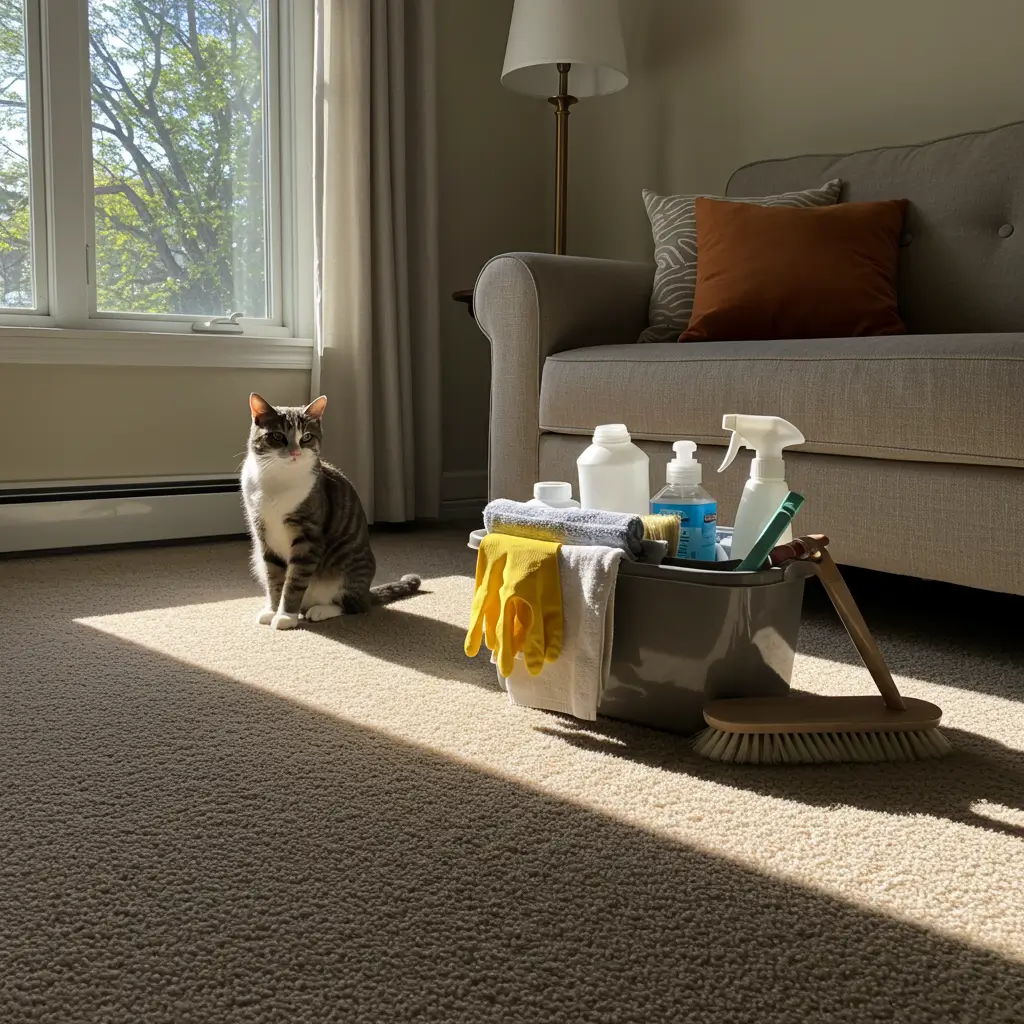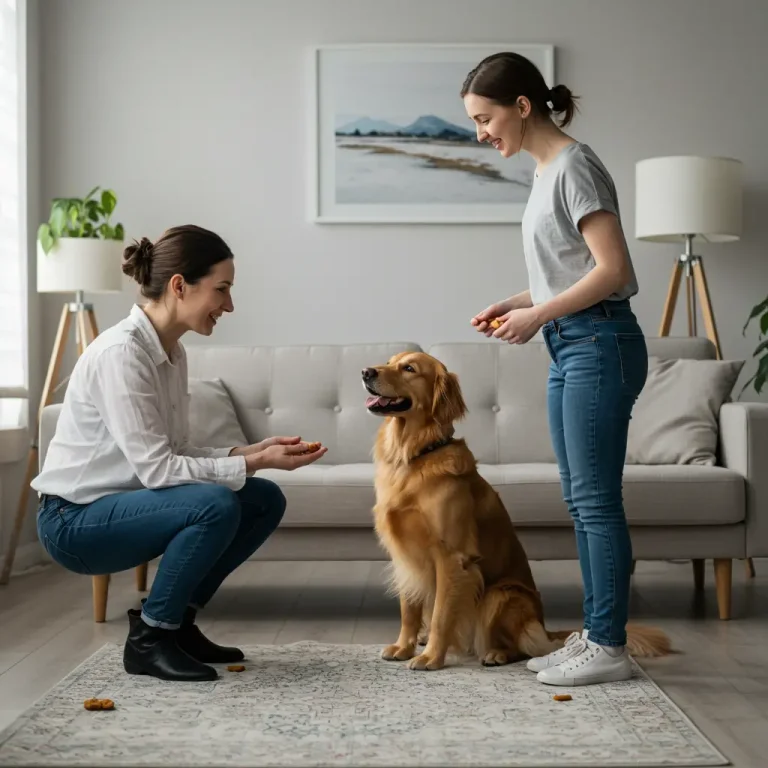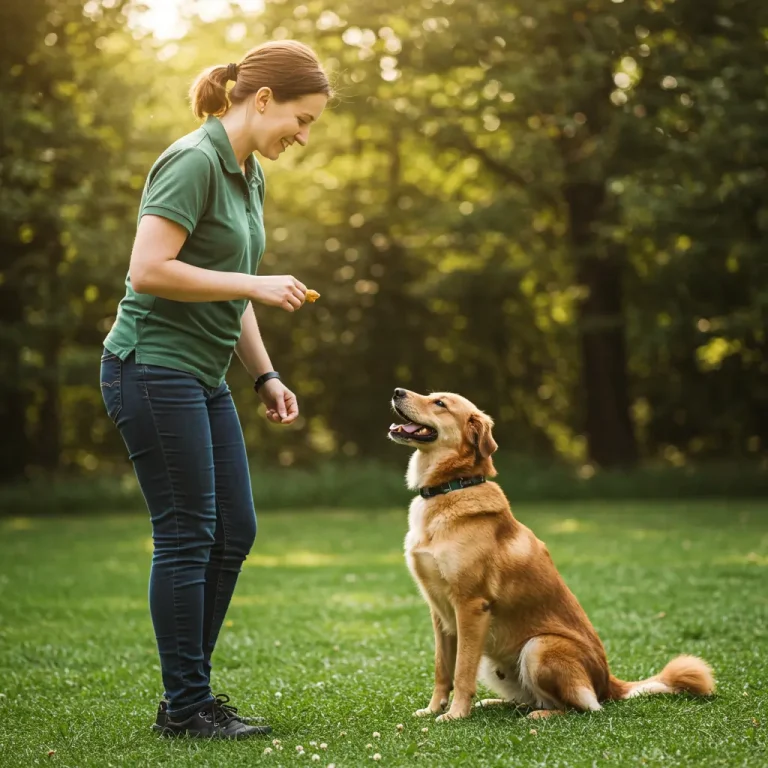How to clean cat pee out of carpet
You catch that sharp ammonia whiff and freeze. Yep, the cat picked your carpet… again. I’ve dealt with this more times than I’ll admit, and I learned fast that speed, the right cleaner, and a no-drama routine save your sanity. Ready to fix the mess and keep the smell from sneaking back?
First moves: act fast and set yourself up
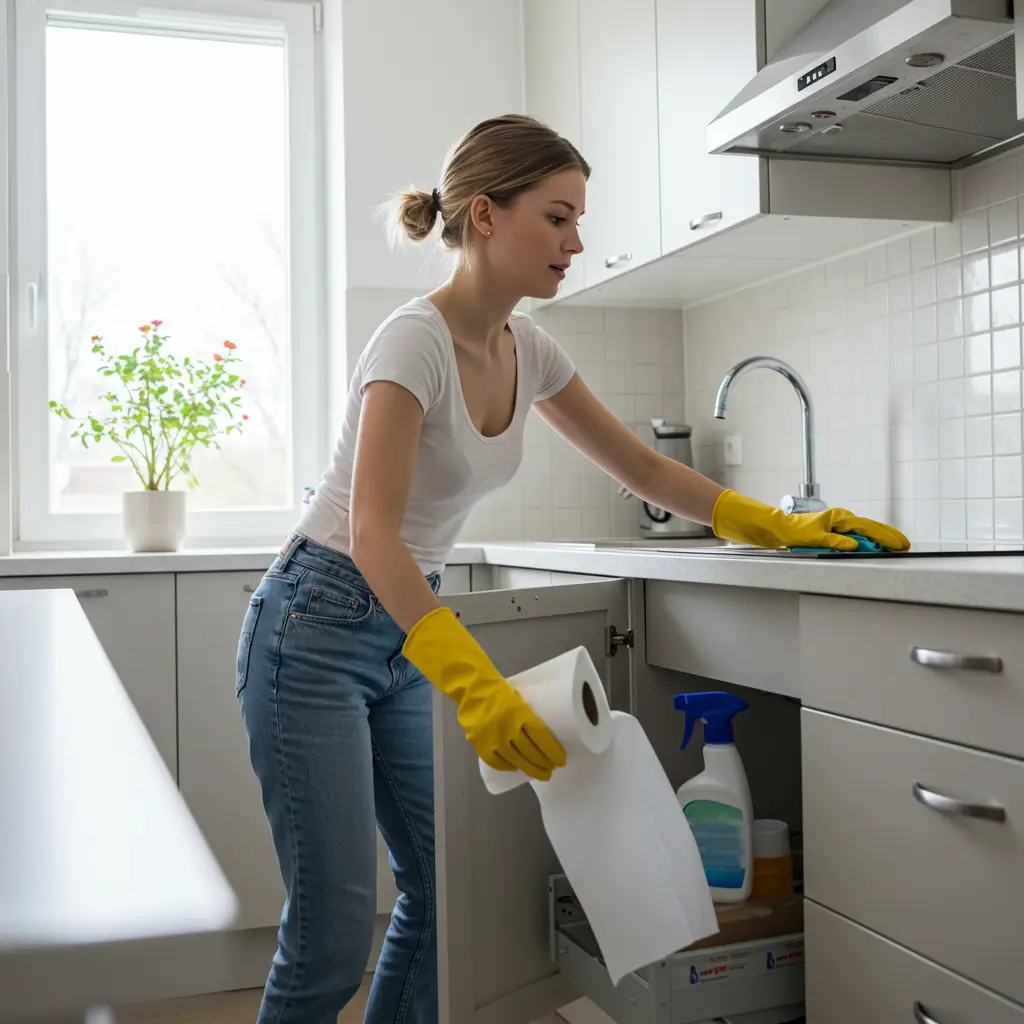
Cat pee sinks in quickly, so move now. You reduce odor, protect the pad, and save yourself a second round later. Ever notice how the smell seems louder the longer you stare at it?
What you need
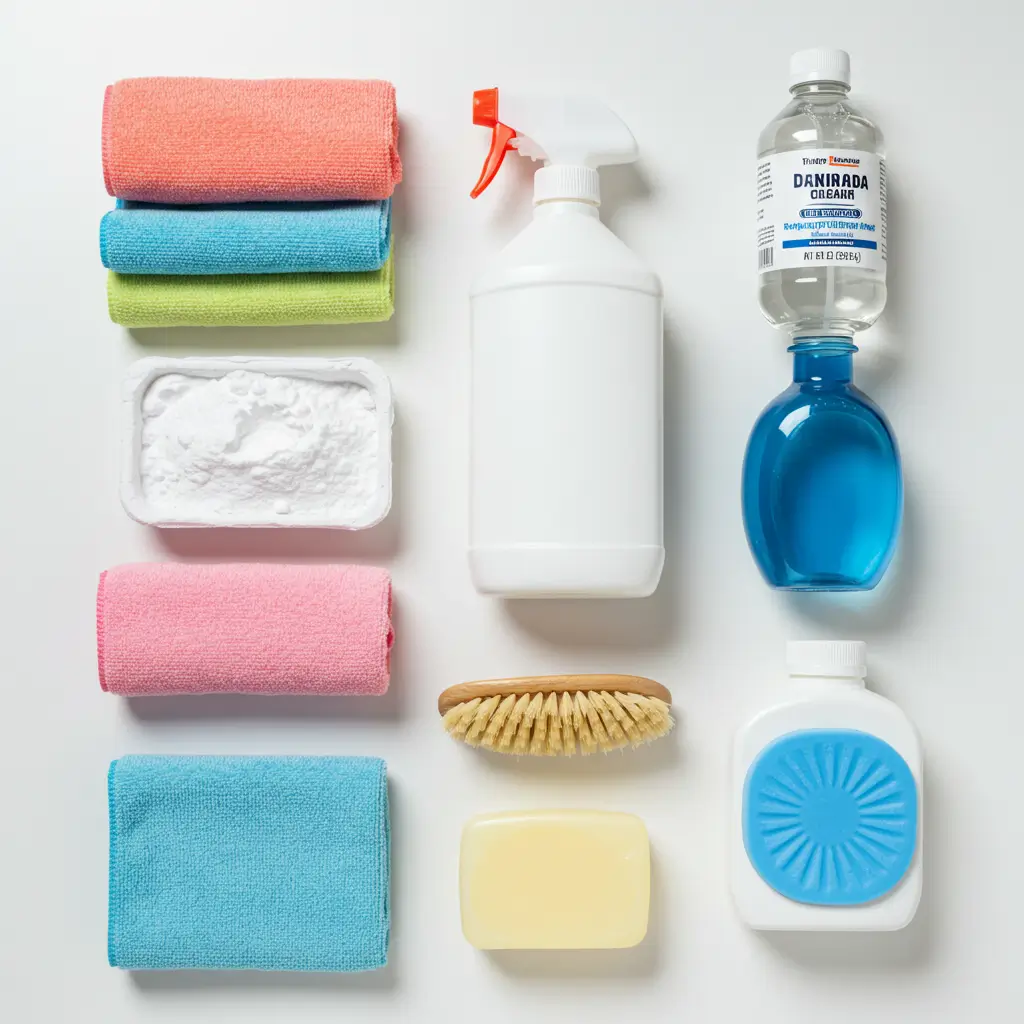
- White paper towels or microfiber cloths (no colors that might bleed)
- Cold water in a spray bottle
- Enzymatic urine remover (pet-specific)
- Distilled white vinegar and baking soda
- 3% hydrogen peroxide and a tiny bit of unscented dish soap (colorfast areas only)
- Soft brush and a wet/dry vac if you have one
Quick triage
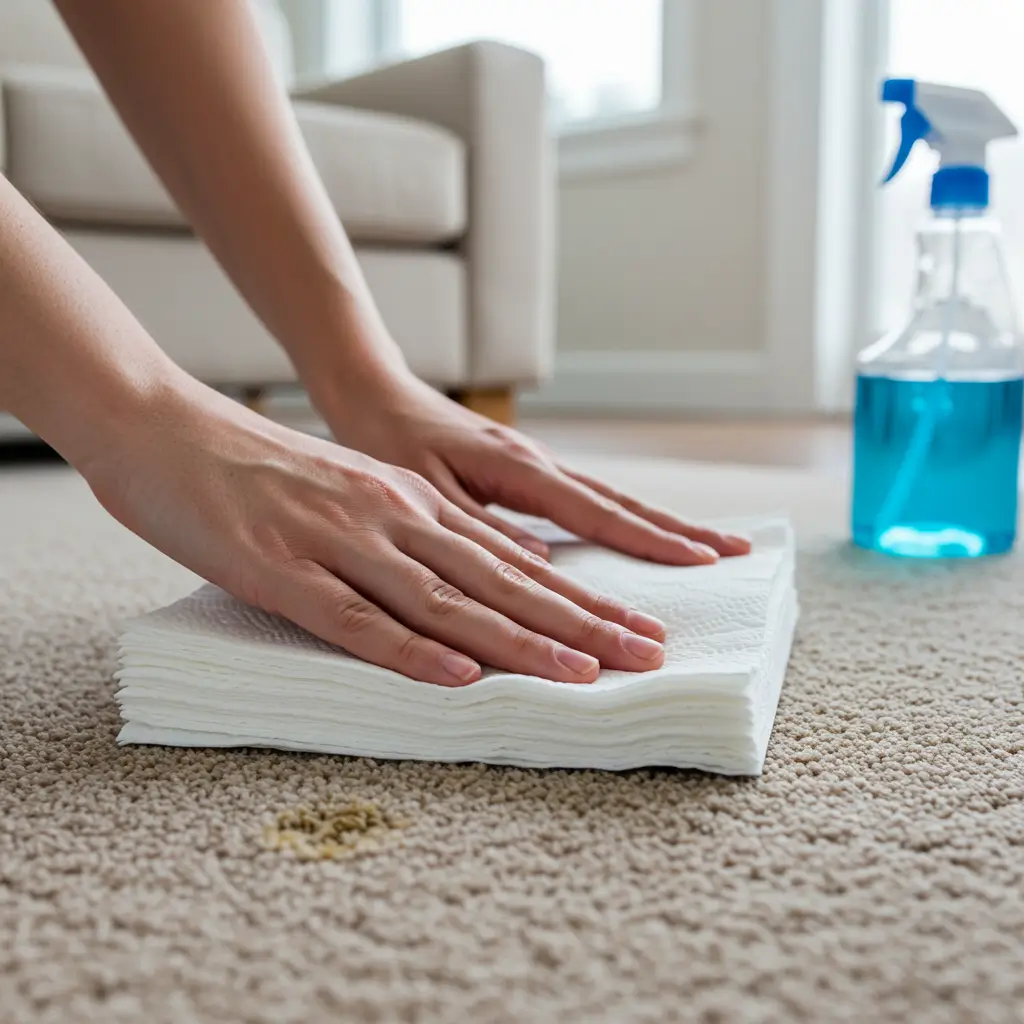
Blot the fresh spot hard with stacked towels. Blot don’t scrub; you lift liquid when you blot and you push it deeper when you scrub. Lightly mist with cold water and blot again. You just bought yourself time and kept crystals from setting.
Why cat pee feels invincible
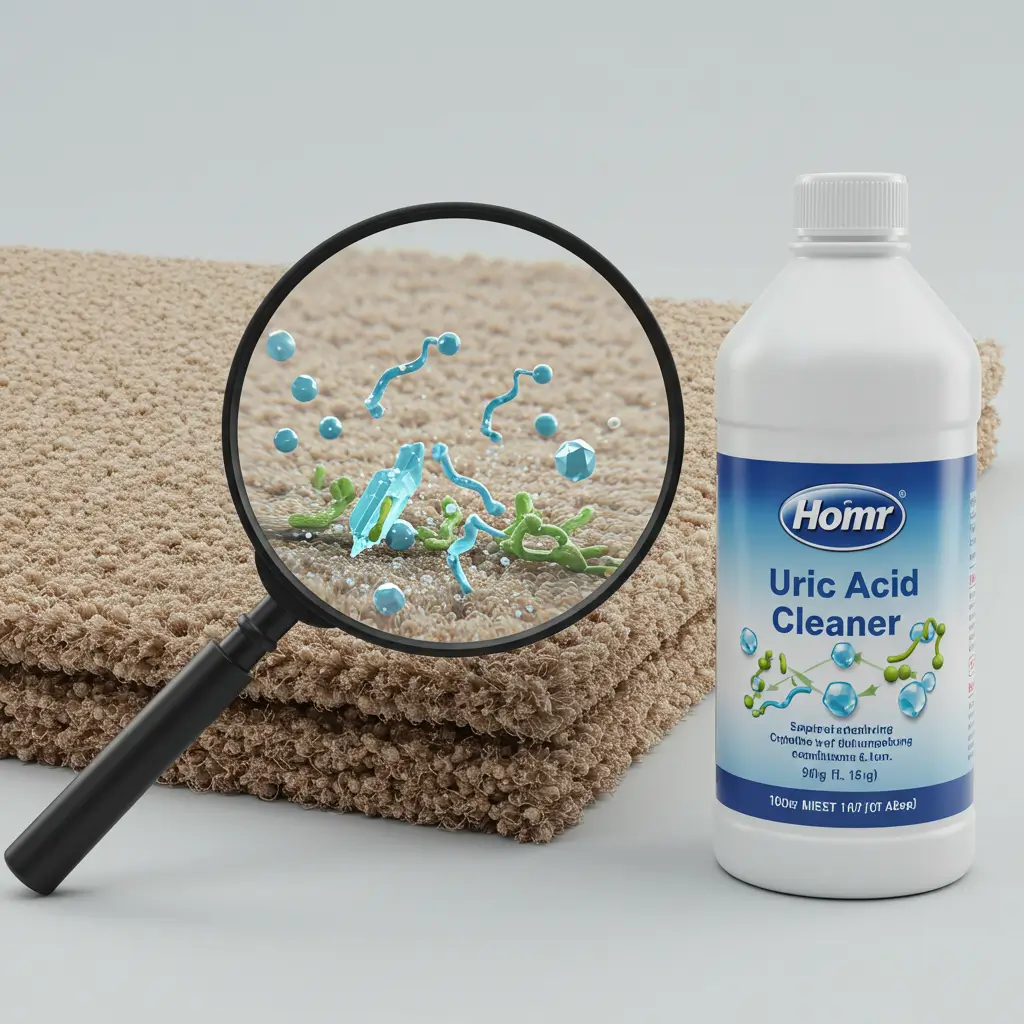
Cat urine carries uric acid crystals that cling to fibers and reactivate when humidity rises. You think you won, then a warm day proves you wrong—fun, right? Enzymes break those crystals down, which explains why enzymatic cleaners beat regular soaps every time. Ever wondered why perfumes fail? Fragrance masks; enzymes fix.
Three proven ways to remove cat pee (use in this order)
Method 1: Enzymatic cleaner (my go-to)
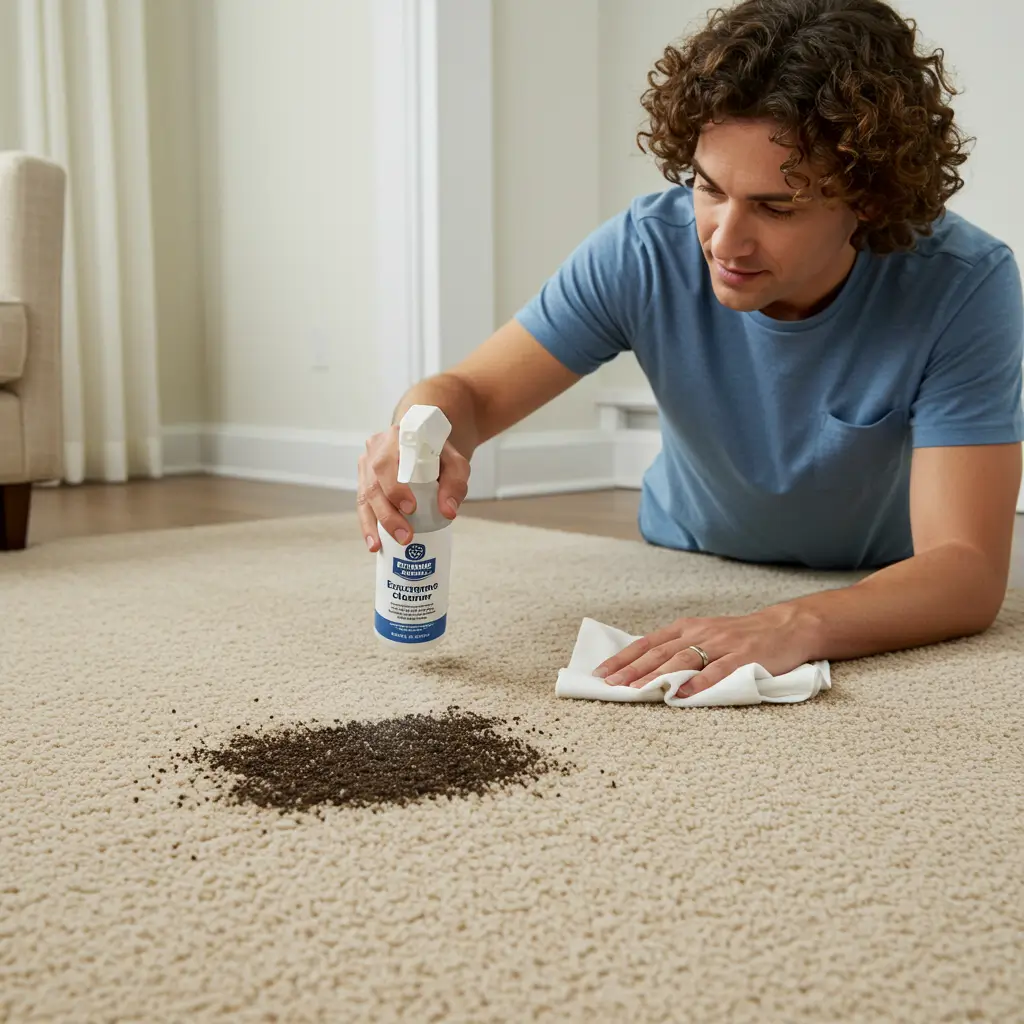
Best for: fresh and old stains, lingering odor
How to:
- Blot thoroughly.
- Soak the area with enzyme cleaner—reach the pad if the stain ran deep.
- Let the enzymes work for 10–15 minutes (or the label timing).
- Blot again; then air-dry completely.
- If needed, repeat. Deep stains often need two to three rounds.
Why it works: The enzymes digest odor-causing compounds rather than covering them. IMO, the enzyme route beats everything for “mystery” smells that keep coming back.
Method 2: Vinegar + baking soda (budget backup)

Best for: neutralizing fresh odor and light staining
How to:
- Mix 1:1 distilled white vinegar and water.
- Mist, then blot.
- Sprinkle baking soda over the damp area; let it fizz quietly with leftover acidity.
- After it dries, vacuum.
Key note: Vinegar helps with odor but doesn’t fully break uric crystals. Use it as a helper or a first pass, not your only tool.
Method 3: Peroxide solution (spot-test first)
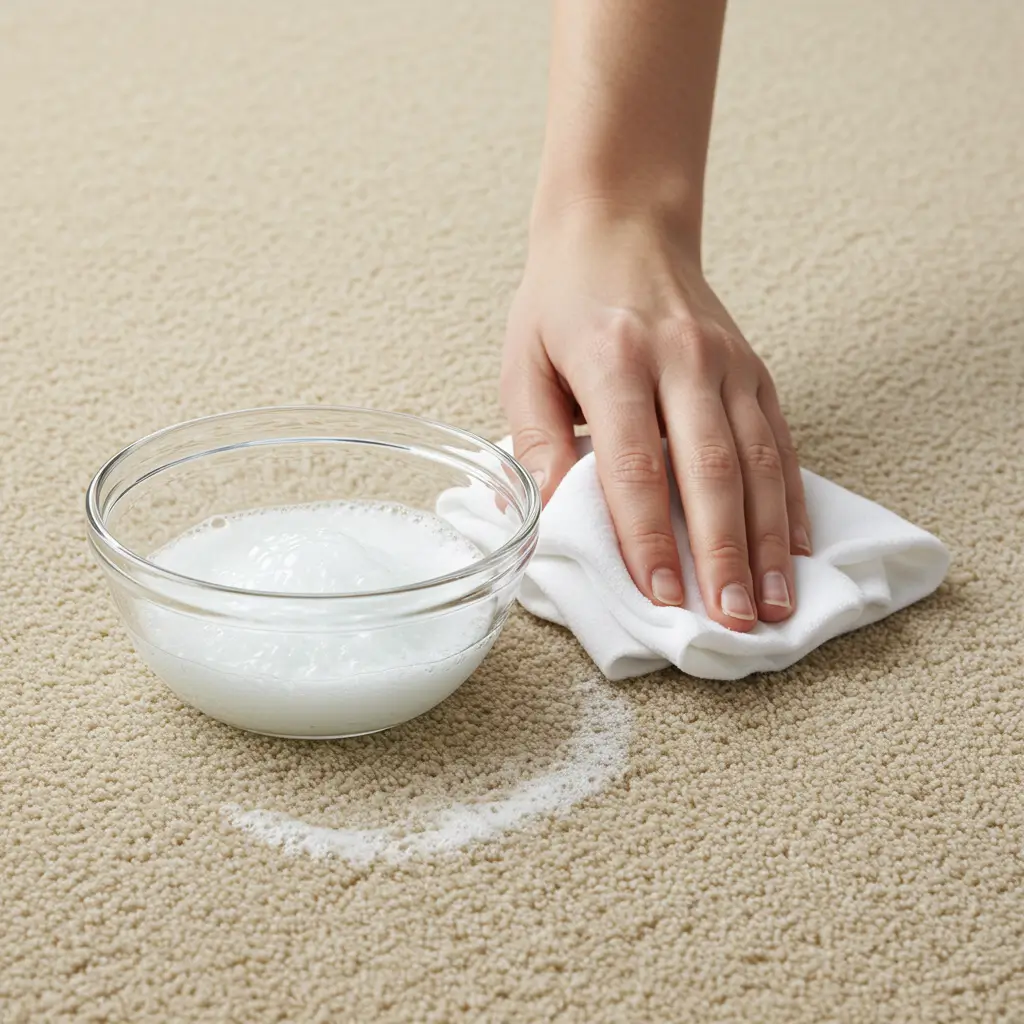
Best for: pale carpets with stubborn shadows
How to:
- Mix ½ cup 3% hydrogen peroxide + a few drops of dish soap.
- Spot-test in a hidden corner.
- Apply lightly, blot, then rinse with water and blot again.
- Allow to dry; repeat only if the carpet passes the test.
Warning: Peroxide can lighten fibers, so keep it gentle and targeted.
The step-by-step playbook I follow
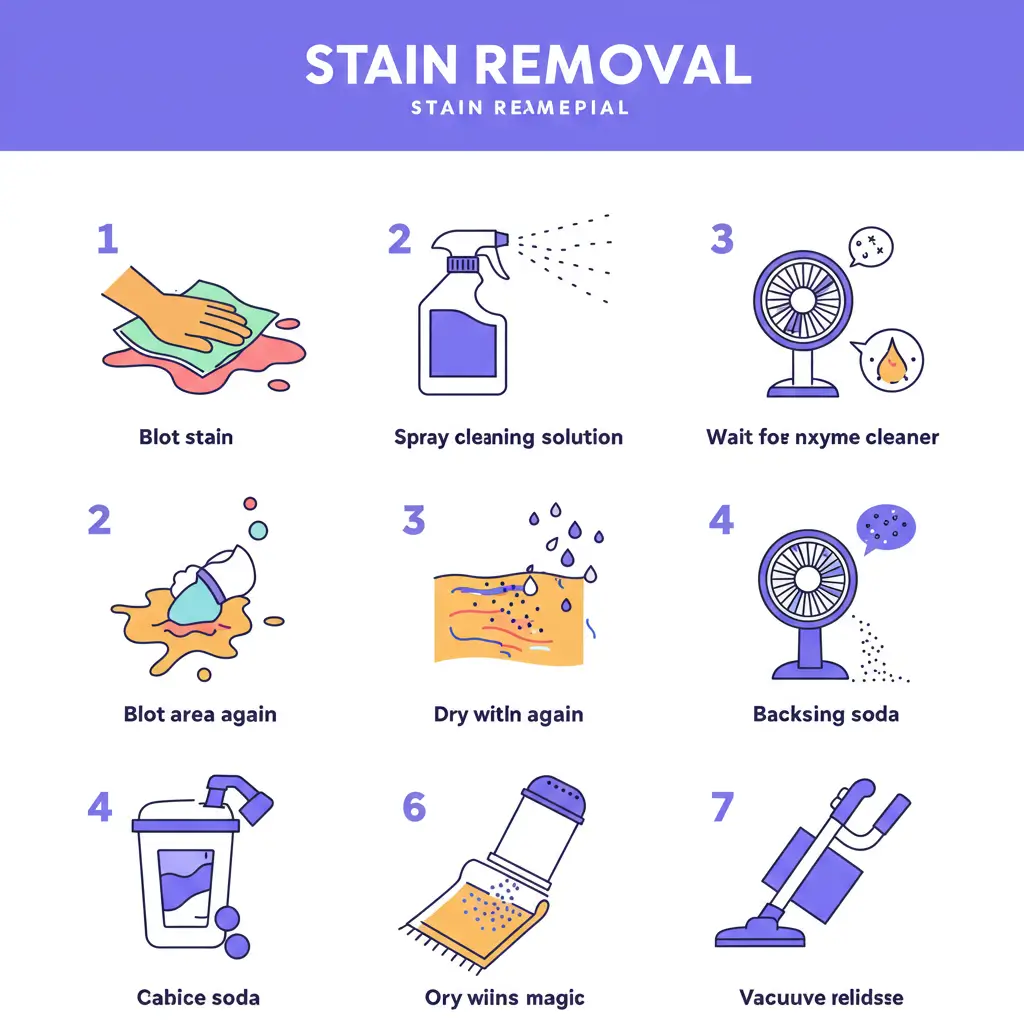
- Blot fast with white towels until you pull up minimal moisture.
- Pre-rinse with cold water and blot again.
- Enzyme soak and wait the full label time. Patience = less odor.
- Blot deep; stand on a folded towel to pull liquid from the pad.
- Airflow helps: open windows or run a fan.
- If you still catch a whiff after drying, repeat the enzyme round.
- Add a baking soda sprinkle once dry, then vacuum for that last bit of freshness.
- For chronic zones, alternate enzyme and a light vinegar rinse, with full dry time between rounds.
What not to do (trust me here)
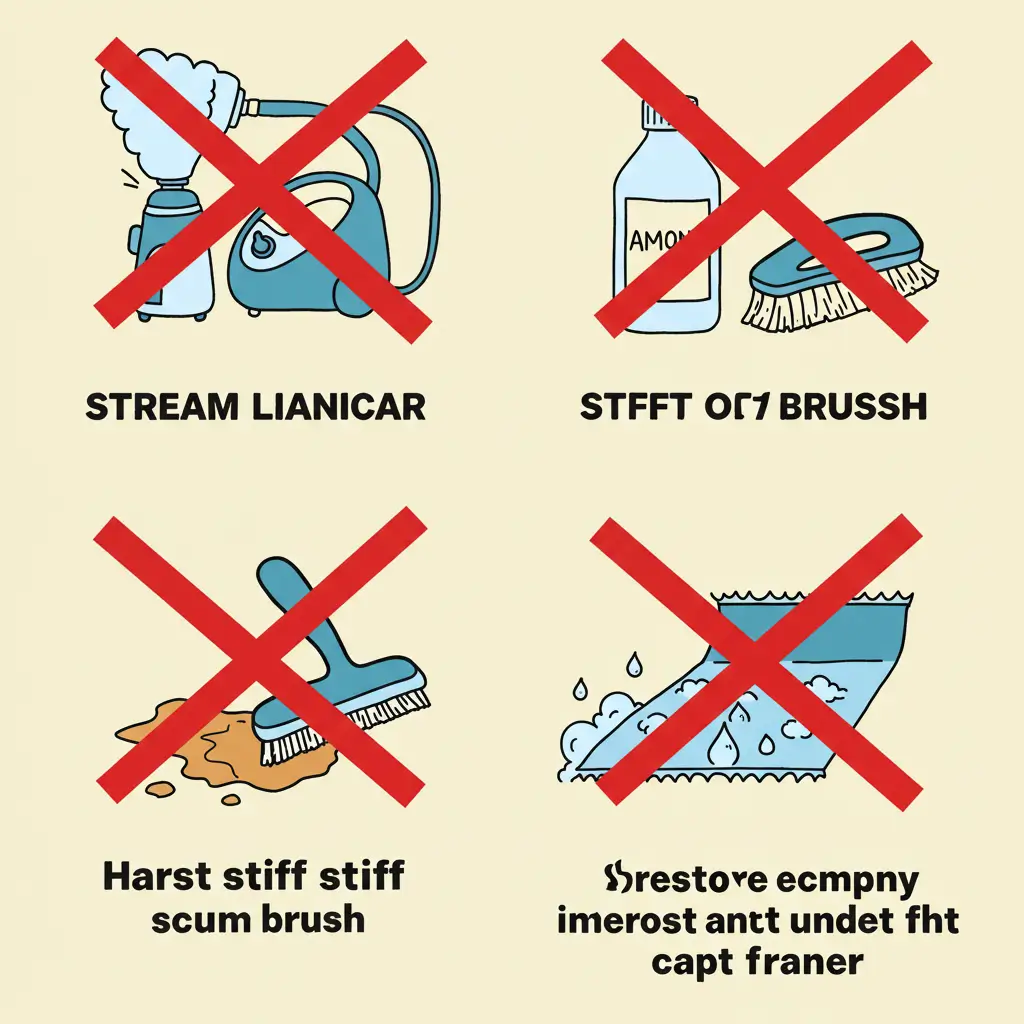
- No steam cleaners. Heat sets odor compounds deeper.
- No ammonia-based cleaners. Cats smell ammonia and think, “Great! Litter box vibes!”
- No wild scrubbing. You fray fibers and drive pee toward the pad.
- No over-wetting without extraction. If you soak, you need strong blotting or a wet/dry vac.
Old stains and mystery smells
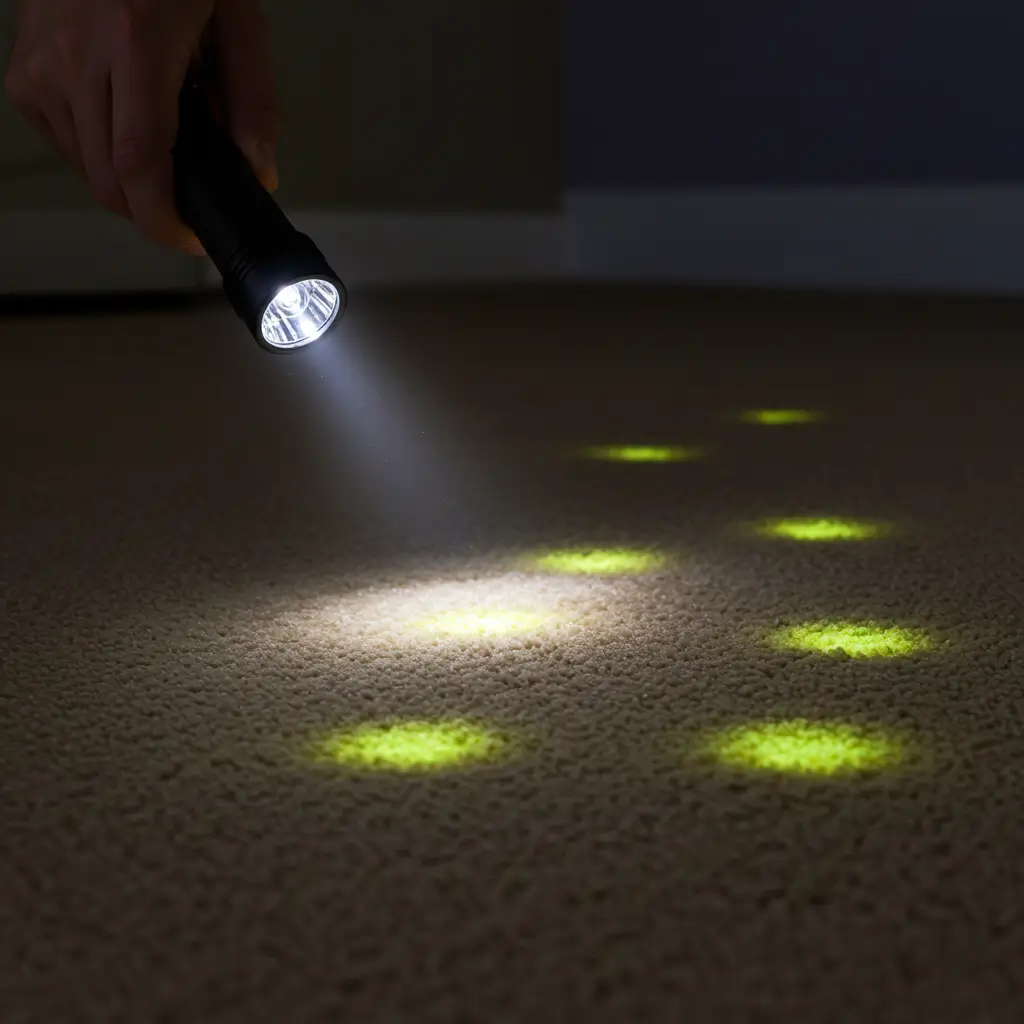
Old stains love to reawaken with humidity. You can map them with a cheap UV flashlight; fresh and old urine often glows under blacklight creepy but helpful, FYI. Saturate those hot spots with enzymes, wait longer than usual, and re-treat after full dry time. Two solid enzyme sessions usually tame even dramatic throwbacks.
When the pad or subfloor got hit
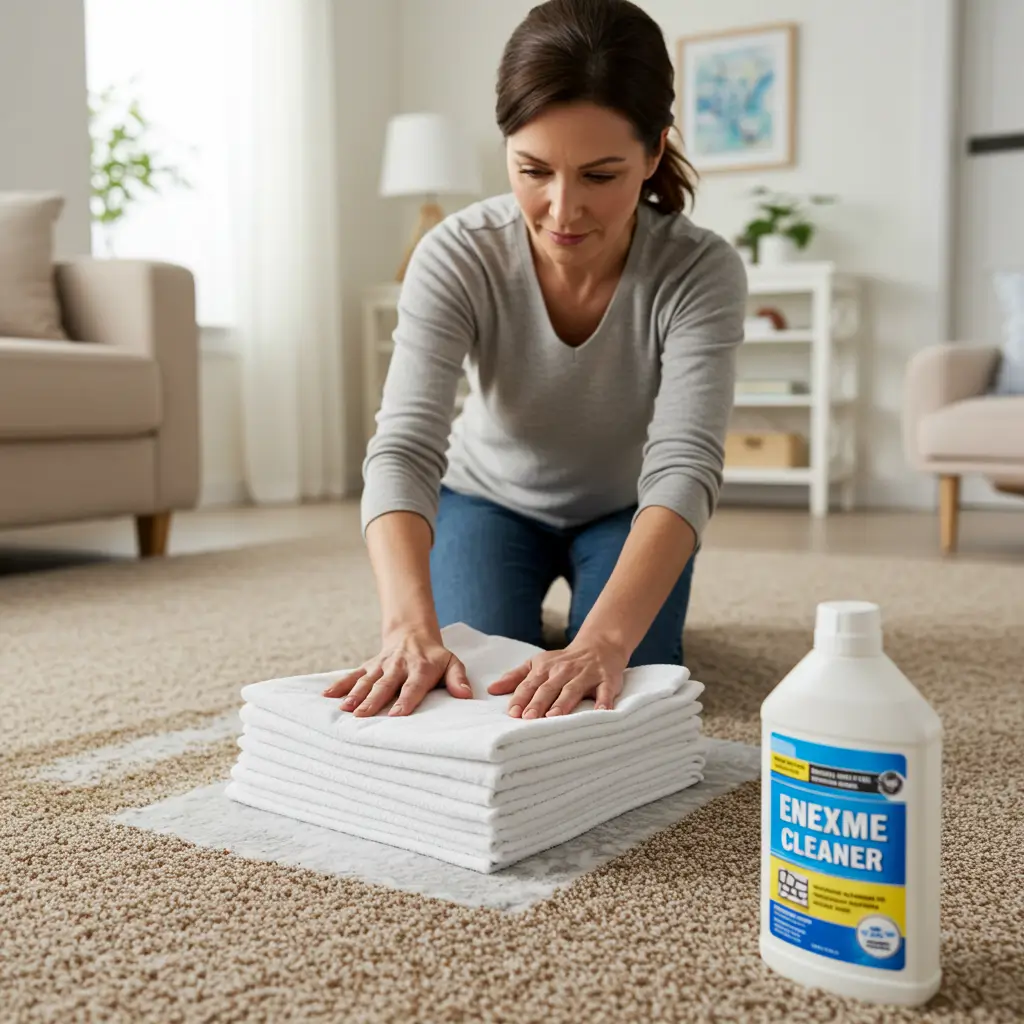
If the area squished or smelled strongly, the pad probably drank some urine. Flood the zone with enzymes so you reach the pad. Press a heavy towel stack over it for a minute to pull liquid back up. Tough cases sometimes need a professional hot-water extraction with enzyme pre-treat. You still take the first swing; pros handle the last 10%.
Product picks that actually help
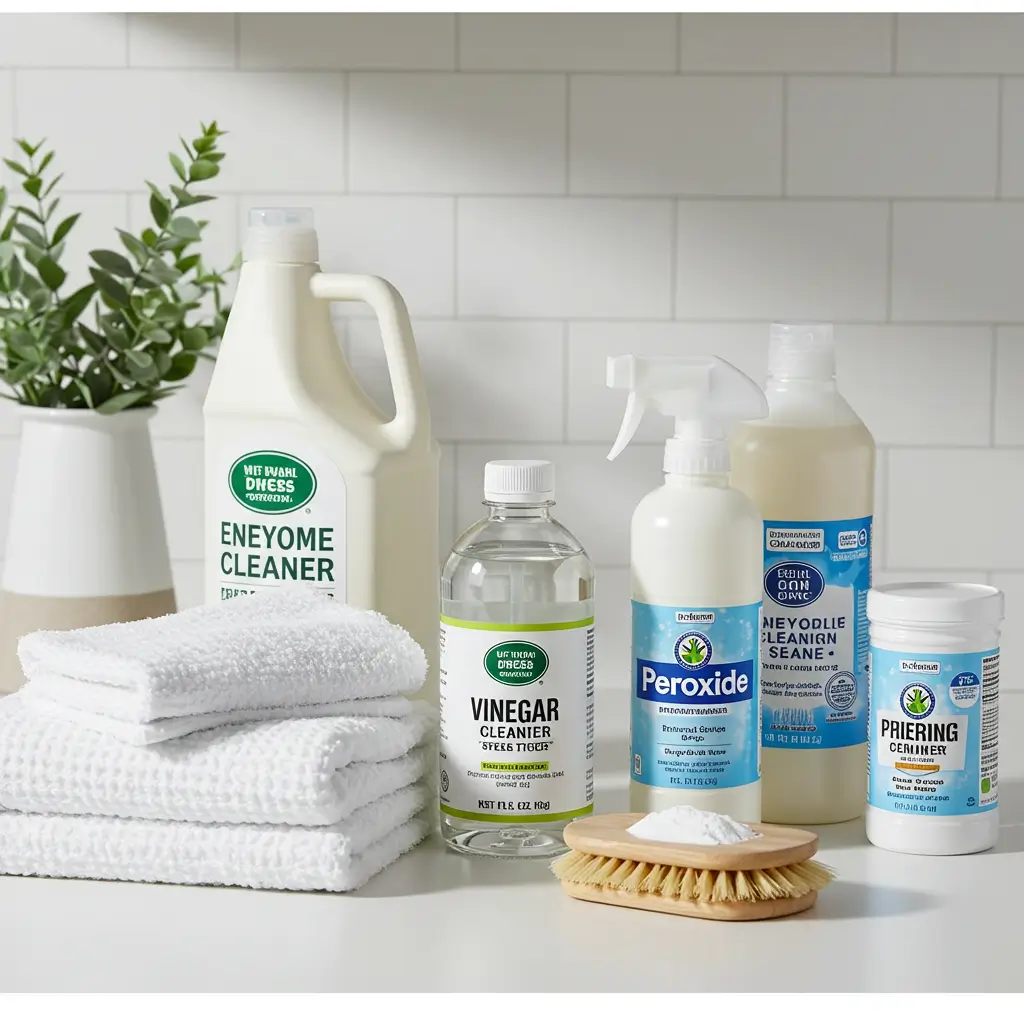
I like pet-specific enzymatic sprays with live cultures and clear usage times on the label. Shortcuts look tempting, but precision matters with cat pee. I keep a small spray bottle of vinegar, a box of baking soda, and a stack of white towels ready because cats prefer surprise attacks. You keep your kit handy; you win more battles. That simple.
Quick comparisons:
- Enzyme cleaner: Best overall for odor and reactivation control.
- Vinegar + baking soda: Good helper, not a solo hero.
- Peroxide mix: Targeted brightening for colorfast areas only.
- Fragrance sprays: Temporary cover, not a fix.
Prevent the sequel (because cats plot)
Litter box logistics
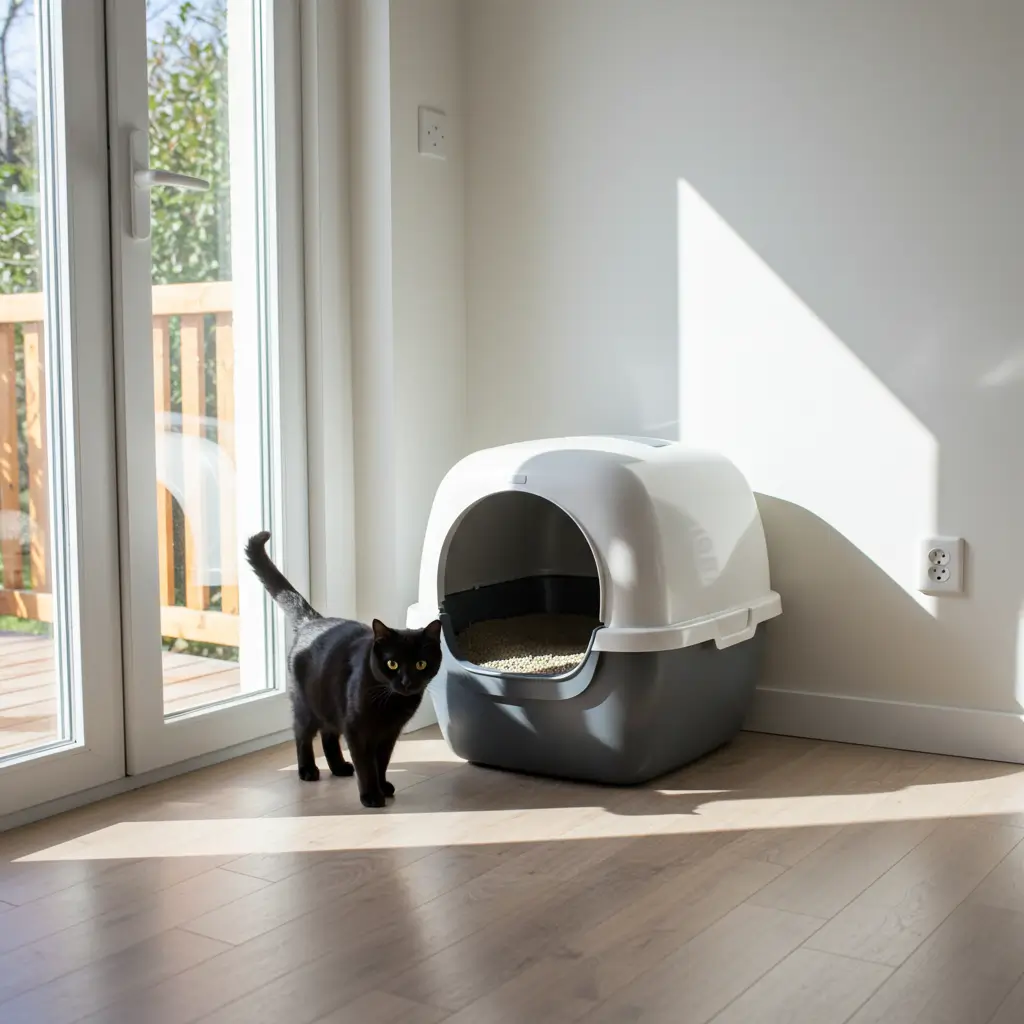
Place one box per cat plus one extra, keep low-dust, unscented litter, and scoop daily. Cats vote with their paws; a clean box wins elections every time.
Health and stress checks

Out-of-box peeing sometimes flags UTIs, crystals, or stress. If your cat changes habits overnight, call the vet. You protect the carpet and your cat in one move.
Territory tricks
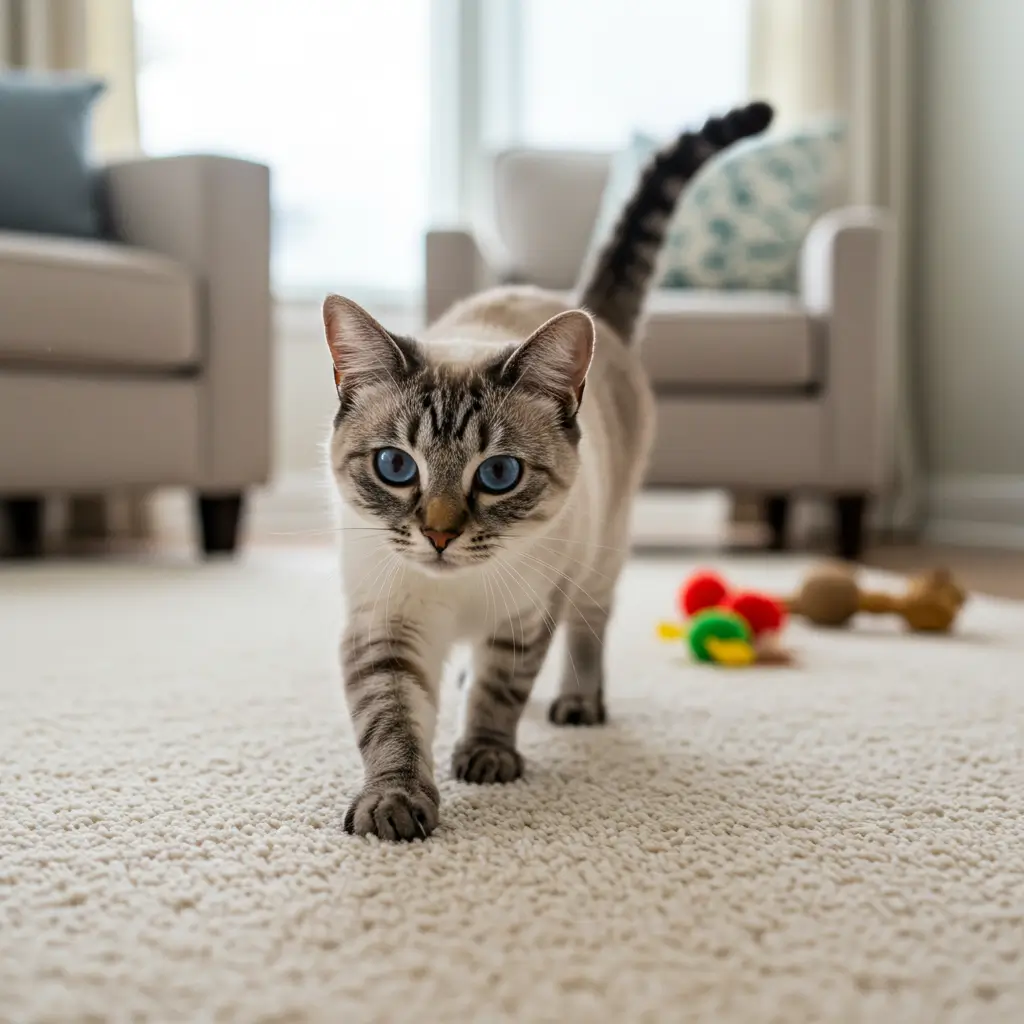
After you clean the spot, block access for a day or two and feed or play on that area later. Cats rarely pee where they eat or play weird rule, reliable result. A little behavior judo helps a lot 🙂
Fast FAQ-style tips
- Smell lingers after cleaning? Run one more enzyme round and add airflow.
- No enzyme cleaner right now? Use vinegar/water and baking soda, then follow up with enzymes later.
- Wool or delicate fibers? Patch-test everything and go gentle.
Bottom line: Enzymes solve the chemistry, blotting stops the spread, and patience locks the win.
Wrap-up: your carpet comeback plan
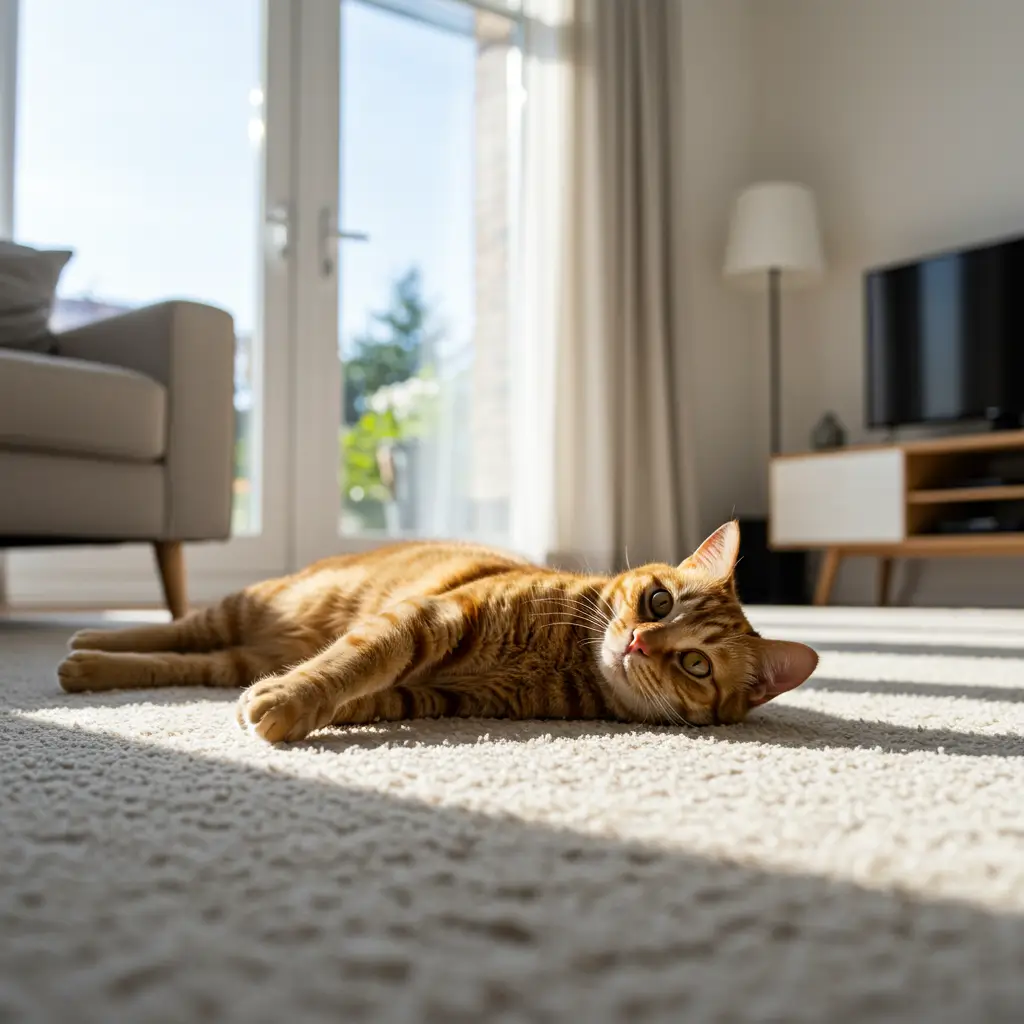
You now own a repeatable, no-panic routine for how to clean cat pee out of carpet: blot fast, use enzymes, dry completely, and re-treat if a whiff returns.
Keep a small kit ready, watch for old hot spots, and tweak the litter box setup so you avoid the encore. You’ve got this, and your carpet can absolutely bounce back no nose-wrinkling reminders, no endless cover-up, and no drama. Clean it right once, and keep it right after.

